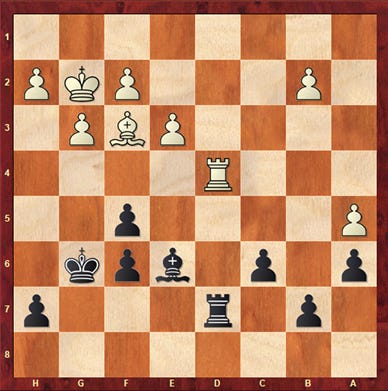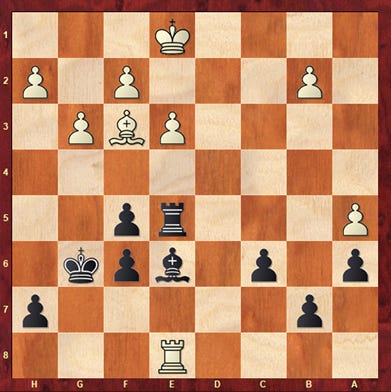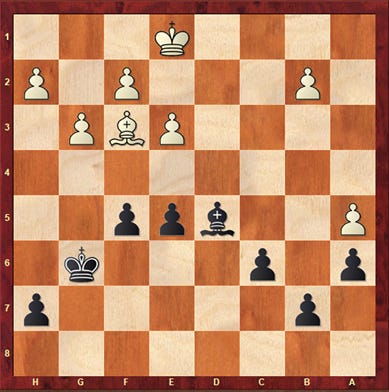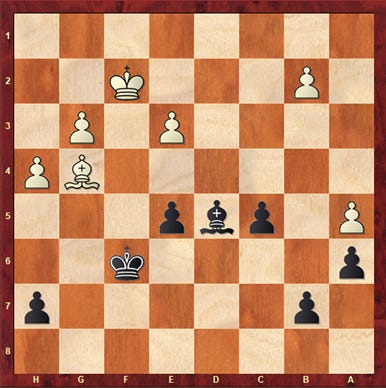Sometimes it Doesn't Take Much
Lately, I’ve been saying that if baseball is a game of inches, then chess is a game of centipawns.
I mean this from the perspective that while at the club level, games are often decided by wild tactical melees and blunders, that’s less common the higher up the rating ladder you go.
A 1700 and a 2700 are going to have games that look wildly different more often than not.
I’m going through this game in the Slav defense (more about that some other time) between Joseph Girel and Varshney Aaryan , and they get into this interesting ending.
Here, Black defers the rook trade with 34…Re7, which at a glance strikes as groveling, but necessary. After all, winding up in an ending with only light-squared bishops and some pawns fixed on light squares seems problematic.
After some more moves, this position is reached:
Here Black plays 41…Bd5 and White exchanges the rooks with 42.Rxe5 fxe5 leaving us here.
Here White chooses not to exchange the bishops. I’m not certain why as I have not dug through this yet. You can bet this position is likely to make an appearance at the weekly Thursday night analysis session.
The last position I want to look at is here.
This is the move where, according to the engine the position gets away from Black. After going through the game I was trying to figure out where the game slips away from Black altogether.
Turns out my conclusion was wrong, so I went back two ply at a time until the eval dropped to essentially even from around +2.5. This is with an exttremely low depth engine run, but here the game move is 47…h6 which to my eyes looks reasonable. My first thought was “How can putting a pawn on a dark square here be bad?” But that’s just hope chess, now isn’t it.
I’ll leave it to the reader to work on this one if they like. Why is …h6 bad? What two moves did the engine prefer better, and why?
Til next time,
Chris Wainscott






